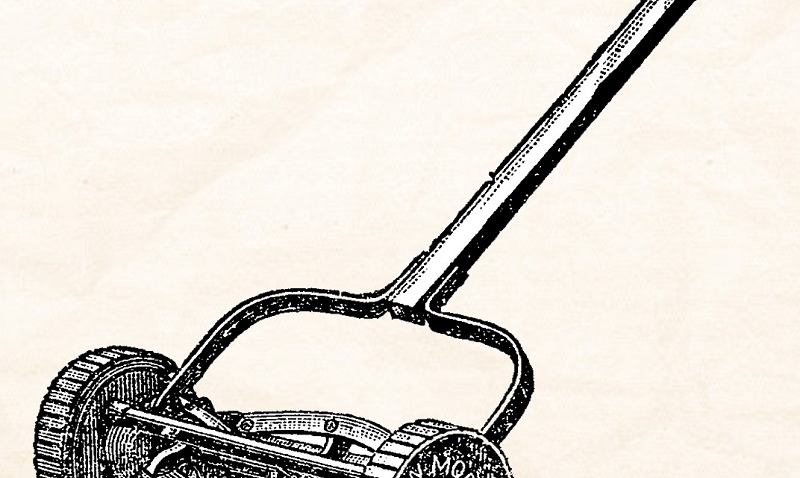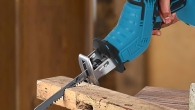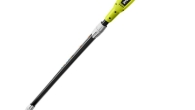
Who Invented the Lawnmower: A Historical Insight
Early Innovations and the First Lawnmower
Who invented the lawnmower? The birth of the lawnmower traces back to early innovations and tinkerings of the 19th century. It represented a significant leap from manual scything to mechanical processes. The period saw the emergence of designs that would lay the groundwork for all modern lawnmowers.

Edwin Beard Budding’s Invention in 1830
In 1830, Edwin Beard Budding revolutionized garden care with his lawnmower invention. Observing a cutting device at a cloth mill, Budding found his inspiration. He reimagined it to trim grass over larger sports grounds. His initial model was crude but effective, demonstrating a clear advance over the scythe.
Budding’s device was roughly 19 inches wide, made from wrought iron. It required a person to push it from behind. The device utilized a rear roller to transmit power to a cutting cylinder. As the roller turned, so did the blades, slicing the grass neatly. The design earned Budding a British patent on August 31, 1830, marking its official recognition.
The approach Budding took was simple yet ingenious. His lawnmower provided an efficient method that was less labor-intensive than traditional methods. Not only did it streamline turf maintenance, but it also paved the way for the many innovations that followed.
Key Developments Through the 19th Century
Who invented the lawnmower? The 19th century was a time of fast innovation for the lawnmower. Following Edwin Beard Budding’s original invention, new models and improvements appeared rapidly.
The Advent of Chain Driven and Steam Powered Models
In 1859, the lawnmower’s design took a significant leap forward. Thomas Green invented a chain-driven model. This model was not only quieter but also lighter. It changed how people viewed lawn maintenance. Then, in 1893, a breakthrough in power sources happened. James Sumner patented the first steam-powered lawnmower. It was an impressive feat for the time, showing how far the lawnmower had come in just a few decades.
Introduction of the Reel Mower
The reel mower came next, with its patent granted to Amariah Hills on January 28th, 1868. This type of mower was different and very popular. It used a series of blades in a cylindrical form to cut the grass. Its design was so successful that it made nearly 100,000 dollars in its first year. The reel mower was a huge step up from Budding’s original invention and continued to shape the future of lawn care.
The 20th Century: Gas and Electric Mowers
Who invented the lawnmower? The 20th century marked a new era for the lawnmower. The journey from manual to mechanical mowing transformed drastically with the introduction of gas and electric mowers. People saw lawn care tech make huge strides forward, changing the game entirely.
The First Gas-Powered Mower in 1902
In 1902, Ransomes of Ipswich brought out the first gas-powered lawn mower. It had an internal combustion engine, a marked improvement over earlier models. These gas mowers quickly became the preferred choice for their power and efficiency. Ransomes’ mower kicked off a trend that would dominate lawn care for years.
Advances During and Post World War Period
The World Wars slowed the spread of gas mowers. High-quality metal was in demand for the war effort. But after peace returned, mower tech made great leaps. Engines improved, and mowers became easier to run and maintain. The 20th century also saw advancements in the mower’s design and usability.
The Riding Lawnmowers and Self-Propelled Models
In 1922, the lawn care industry welcomed a major innovation: riding mowers. The Ideal Power Company created the first self-propelled riding lawnmower. This model added comfort and speed to mowing large spaces. It was a precursor to the zero-turn mowers we know today, which were first created in 1955. Riding and self-propelled models redefined the mowing experience, offering ease and efficiency to the user.
Modern Advancements in Lawnmowing Technology
In recent decades, lawnmower technology has seen significant transformations. These innovations have changed how both residential and commercial landscapes are maintained.
The Rise of Zero-Turn and Riding Mowers
Zero-turn mowers, first created during the mid-20th century, have gained immense popularity for their agility and efficiency. These mowers can rotate on their own footprint, making them perfect for navigating around obstacles and tight spaces. This feature significantly reduces the time it takes to mow large areas. Similarly, riding mowers offer comfort and increased productivity, especially for vast spaces such as golf courses and public parks.
Entry of Robotic and Solar Powered Lawnmowers
The 21st century introduced robotic lawnmowers, which represent a leap towards full automation in lawn care. These mowers operate autonomously, navigating through lawns with little to no human intervention. They are programmed to dodge obstacles, manage varying grass lengths, and return to charging stations as needed. Additionally, the environmental push has encouraged the production of solar-powered mowers, which operate using clean energy. This not only cuts down on fossil fuel consumption but also reduces noise pollution compared to traditional gas-powered mowers.
Lawn Mowers in the 21st Century
The 21st century has seen a remarkable evolution in lawn mower technology. Innovations have focused on making mowers smarter and more sustainable.
Advances Towards Autonomy: Robotic and Smart Mowers
Robotic mowers entered the market, changing how we view lawn care. These machines work alone, with little to no human help. They move around, avoid objects, and return to charge when needed. Smart mowers can now be controlled from a phone, making lawn care more convenient.
Eco-Friendly Innovations: Electric and Natural Gas Mowers
As concerns for the environment grow, mowers are becoming greener. Electric mowers, which produce zero emissions, have become more popular. They are quieter and easier to maintain than gas models. Natural gas mowers offer a cleaner alternative to traditional gasoline, reducing the carbon footprint of lawn care.

The Future of Lawn Mowing
As we look to the future of lawn care, trends are clearly leaning towards models that prioritize sustainability and efficiency. The continuous evolution of technology suggests exciting possibilities for the lawnmower’s next chapter.
Trending Towards More Sustainable and Efficient Models
The lawn mowing industry is stepping forward with a keen focus on eco-friendliness. Innovators are crafting mowers that leave a smaller carbon footprint. Electric lawnmowers are at the forefront of this change. They offer a quieter, emission-free alternative to traditional gas mowers. Another frontier is natural gas mowers, which provide a cleaner burn than gasoline. These advances indicate a brighter, greener future for lawn maintenance, with ongoing innovation sure to bring even more improvements.
The Potential for Fully Autonomous Lawn Care
Robotic lawnmowers are just the beginning of what could become an entirely autonomous lawn care experience. These smart machines navigate lawns independently, avoiding obstacles and managing varied grass conditions. The industry is buzzing about the potential for mowers that operate without human input, possibly guided by advanced sensors or GPS. With the pace at which technology moves, it’s not hard to imagine a future where lawn mowers are fully self-operating, allowing people more time to enjoy their well-manicured outdoor spaces without the labor.

Conclusion
Who invented the lawnmower? The invention of the lawnmower by Edwin Beard Budding in 1830 marked the beginning of a long and ongoing journey of innovation. From the first mechanical model to the modern, high-tech machines we use today, the lawnmower has played a crucial role in shaping our landscapes and lifestyles. As we look to the future, it is clear that the lawnmower will continue to evolve, driven by advances in technology and a growing awareness of environmental issues. Whether you are a homeowner, a professional landscaper, or simply someone who appreciates a well-kept lawn, the story of the lawnmower is a testament to human ingenuity and the enduring appeal of a beautiful, green space.












Leave a Reply